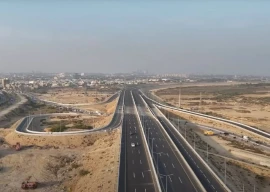
The new year will present multiple terrorism challenges to Law Enforcement Agencies (LEAs) in South Asian region. These challenges can be categorised into four major areas: acquiring public support to fight against militancy; tracing financial sources of terrorism and blocking them effectively; using sophistical technologies to trace and engage terrorists in cyber or non-cyber domain; and evolving a mutual intelligence gathering, sharing and collation mechanism to deal with movements of terror operators on multiple strata in the region. These areas have been approached with an isolationist mindset by individual countries owing to historical disputes and local frictions leaving place open to militants to operate easily.
In nearly all the countries in the region, public support seems to be missing in fight against militancy. The public mistrust primarily stems from empty promises on key areas of public service delivery and basic infrastructure, healing improperly the scars of previous military operations and dual policy of state in dealing with militancy. Here the main thrust of all the countries is in kinetic domain and wherever non-kinetic avenues are explored the same have not been enthusiastically followed with conviction. It is pertinent to mention here that public has understood the dual role of the state and tried to become neutral or at least they are not ready to take side in any CT effort. Nearly all countries are jostling with the nationalistic tendencies which become entangled with the terrorism incidents, thus raising suspicion and inviting punitive measures against youth or particular social section. This has further alienated the population from the state and its policies. In many instances, the cleared areas have either not been handed over to civilian authorities or where such exercise has been executed the civilian structures failed to perform owing to incomplete institutional building and intense infighting among rival departments. It is time that regional countries should properly strengthen police organisations so as not to expose military to public ire in settled regions.
The financial lines, both formal and informal, have to be traced and documented. These provide valuable information on how the internal and external funding is reshaping the militancy in a country. It can also detect how criminal tendencies are sustaining militant activities in the region. The external funding from alien agencies to different militant groups can be determined as well. If a state has a holistic picture of militant funding avenues, it can devise strategies to squeeze it gradually or control it in accordance with its aims and objectives. The cyber based transactions may provide a good area for potential funding to sectarian and nationalistic tendencies which may also be determined on the basis of financial inflows.
Drone based IBOs, within and across the border regions, are going to reshape counterterrorism operations in the region. There are indications that many militant organisations are already using drones as a counter measure against LEAs. Apart from precision of target attack and its selection, the drones are now gradually being operated through localised and regional data bases. A proper digitalised register is required to be maintained at national or regional level to automatically track and trace the probable militants. This requires a collaborative effort by the regional states which in majority of situations remain at odds with each - politically, internationally or at least on the basis of different state structures.
Lack of any proper regional anti-terrorism structure has put South Asian countries at the mercy of militant elements. The SCO-RATS has not been able to bridge the differences among regional countries especially after the onset of Ukraine and Gaza wars. There are credible reports that many countries are operating on the soil of others to sustain regional rivalries. It appears that regional countries or their intelligence apparatuses are not willing to reduce or minimise threat of militancy in the region through collaborative means.
Hence, these complex elements may continue to shape and reshape future of militancy in South Asian region in 2025.












1736332856-0/Untitled-design-(20)1736332856-0-270x192.webp)



1736334465-0/sidra--(45)1736334465-0-270x192.webp)


COMMENTS
Comments are moderated and generally will be posted if they are on-topic and not abusive.
For more information, please see our Comments FAQ